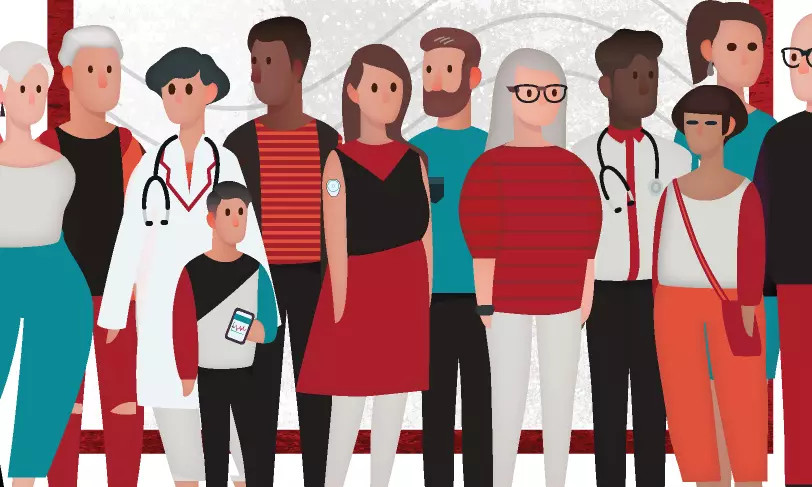
Abstract
The American Diabetes Association’s 2025 Standards of Care reflect a growing shift toward personalized, patient-centered diabetes management. This overview translates key updates for individuals living with diabetes, emphasizing broader use of technology, smarter lifestyle guidance, integration of heart and kidney care, and increased attention to social and environmental factors. The focus is no longer just on medications, but on the full context of a person’s health and daily life.
The American Diabetes Association (ADA) released its updated Standards of Care in Diabetes for 2025 several months ago. These annual updates guide how healthcare providers deliver diabetes care across the U.S. While the standards are written for clinicians, many of the changes have a direct impact on people living with diabetes. This summary highlights what’s new and why it matters from a patient perspective.
Key Points
- More personalized care plans – New guidelines support tailoring diabetes treatment based on individual needs, not just type 1 or type 2 labels.
- Broader access to CGM technology – Continuous glucose monitors are now recommended for more people, including some with type 2 diabetes not on insulin.
- Lifestyle advice goes beyond diet and exercise – Sleep quality, muscle maintenance, and hydration are emphasized alongside plant-based nutrition.
- Support beyond medication – Social factors like affordability and access to care are now officially part of diabetes treatment planning.
- Integrated heart, kidney, and liver care – Screening and treatment are becoming more coordinated to protect long-term health.
Here’s a patient-focused look at what’s new and why it matters.
Your Diabetes Type May Be More Complex Than a Label
Some people have features of both type 1 and type 2 diabetes. The new guidelines support a more flexible, needs-based approach. That means treatment should be tailored to how your body responds, not just the name of the condition.
Support That Goes Beyond Medication
Your environment, access to care, and ability to afford medications all matter. These social factors are now part of the official care framework. If you’re facing challenges, you’re encouraged to talk with your care team. They may be able to help in ways that weren’t previously considered part of treatment.
Education Makes a Difference
Diabetes self-management education isn’t just for newly diagnosed patients. Ongoing sessions, either individual or in groups, can help with everything from understanding new medications to managing weight, stress, and lifestyle changes.
Lifestyle Tips Are Getting Smarter
There’s a new emphasis on:
- Sleep: Poor sleep can increase diabetes risk and make it harder to manage.
- Healthy weight: Losing weight helps, but losing too much, especially muscle, is a concern.
- Nutrition: Plant-based protein and fiber are encouraged. Sugary drinks, including diet sodas, should be limited. Water is the preferred choice.
Liver Health Now Part of Diabetes Care
If you have type 2 diabetes or obesity, your doctor may start screening for liver conditions called MASLD or MASH. New tools help identify who is at risk and when to act.
More Personalized Glucose Targets
Your A1c goal should reflect your age, overall health, and what is realistic for you. New visual tools help your care team adjust these goals. Preventing low blood sugar is now a more prominent part of the conversation.
Technology Is for Everyone, Not Just Those on Insulin
Continuous glucose monitors (CGMs) are now recommended even for some people with type 2 diabetes who are not on insulin. Early use of diabetes technology helps you better understand glucose patterns and make more informed decisions.
Weight Loss Tools and Concerns
- Doctors are encouraged to monitor more than just BMI when tracking weight loss.
- Staying on weight-loss medications long-term may help you maintain your progress.
- Providers are being asked to reduce weight stigma, making conversations about weight more respectful and supportive.
Heart and Kidney Health Are Now Fully Integrated
Your diabetes care may include more coordination with heart and kidney health. Updated visuals help doctors select the right medications and monitor risk more effectively, keeping your long-term health in focus.
Older Adults Receive More Individualized Care
As people age, care should reflect personal priorities such as mobility, memory, safety, and simplified treatment. Insulin regimens are being simplified to reduce confusion and the risk of low blood sugar.
Pregnancy and Hospital Care Updates
- CGMs are now considered safe and helpful during pregnancy.
- New hospital guidelines offer better direction on how to manage medications before procedures, improving safety and outcomes.
Final Thoughts
The 2025 updates show a clear shift toward more personalized and supportive care. With better tools, expanded education, and a team-based approach, people living with diabetes are being supported in new and more meaningful ways. Talk with your healthcare provider to see how these updates might affect your care plan and consider sharing this summary with others who might benefit from a clearer understanding of what’s changing.








